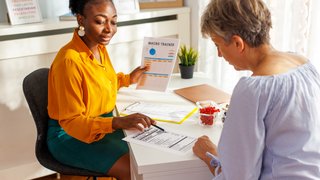Traveling with diabetes: Tips for packing, snacking, monitoring, and more
November 20, 2023
QUICK LINKS: Before your trip | During your trip | Travel checklist
By Shibbi Alexander, APRN, FNP-C, AGACNP-BC

For patients with diabetes, travel requires an extra layer of planning beyond booking flights, making hotel reservations, and researching excursions. But having diabetes shouldn’t stop you from exploring the world. You just need a precise plan to cover your health needs – whether you’re flying, driving, or cruising.
The most common travel challenges for people with diabetes involve changes in diet, activity levels, time zones, and environments, all of which could hinder your blood glucose control.
Questions about travel come up often in UT Southwestern’s Diabetes Self-Management Education Services clinic, and our specialists are adept at providing everything from health exams and packing tips to assisting with medical documentation.
Whether you’re taking a quick getaway or an extended trip, planning is the key to a safer, more enjoyable journey.
Before you travel
Do your research: Confirm the mode of travel, accommodations, access to food and exercise, nearby hospital/pharmacies, and access to emergency medication.
Contact your health care provider to ensure your blood sugar is under control and your vaccinations are up to date. You can also discuss your itinerary and how to handle potential challenges, such as:

- Learning how to adjust your insulin doses at different temperatures or altitudes, which can change how your body uses insulin.
- Filling prescriptions in different regions or abroad.
- Packing appropriately to stay on top of your blood sugar during the journey and at your destination.
- Getting prescriptions in case you lose or run out of medications.
- Asking your pharmacist to print extra labels you can attach to plastic bags.
- Getting a letter, if required, stating the need for medical supplies to carry and manage diabetes.
- Getting a medical ID bracelet stating you have diabetes.
- Ordering a special meal in advance for the flight, if applicable, or packing your own.
Simplify traveling
When it comes to medication and supplies, pack double the amount you’ll need. If you’re going for a week, pack two weeks’ worth of:
- Insulin.
- Medications.
- Test strips.
- Continuous glucose monitor.
- Insulin pump and supplies, such as batteries, lancets and syringes.
Patients on an insulin pump should carry extra insulin in case of pump failure.
If you’re flying, keep medications in the original packaging. Your continuous glucose monitor or insulin pump can be damaged if it goes through an X-ray machine, so ask for a physical screening or metal detector at the security checkpoint. Consider enrolling in the Transportation Security Administration (TSA) pre-check online to make the process easier.
Diabetes travel checklist: Documents and supplies you'll need for a safe and satisfying trip
When flying or driving
Make sure you’re up to date on what is allowed through airport security. People with diabetes are exempt from the TSA 3.4-ounce liquid rule for medications, fast-acting carbs such as glucose tablets or gummy/hard candies in case of low blood sugar, and healthy snacks like fruit, raw veggies, nuts, green apples, berries, protein bars, peanut butter crackers, granola bars, and trail mix.
Carry gel packs to keep insulin cool, and alert TSA agents that you have these items and keep them separate during screening. You should print and carry an optional TSA Disability Notification Card [PDF] to expedite the process.

Patients with diabetes should pack medications and supplies in a carry-on, not a checked bag, for a couple reasons. First, insulin could get too cold in your checked luggage. Second, if your bags are lost or delayed, at least you’ll have your meds with you.
Also, higher altitudes may lead to incorrect blood glucose readings – approximately 1%-2% lower against each 300m/1000 feet rise due to lower oxygen pressure. Avoid injecting air into the bottle when drawing insulin from the vial while flying.
Follow these additional flying and driving tips:
- Stay hydrated.
- Walk up and down the aisle of the plane every hour to prevent blood clots.
- Remember to stop and get out of the car every hour to prevent blood clots.
- Set an alarm on your phone for taking medicine if you’re traveling across time zones, which can throw off your eating habits and exercise routine.
When it comes to eating, choose healthy food options at the airport or at roadside restaurants, such as:
- Fruit, nuts, sandwiches, yogurt.
- Salads with chicken or fish (skip the dried fruit and croutons).
- Eggs and omelets.
- Burgers with a lettuce wrap instead of a bun.
- Fajitas (skip the tortillas and rice).
Recognize your carbs: fruits, grains, starchy vegetables, dairy products, sweets, sauces, alcoholic drips. Try to avoid buffets, and space out your meals.
Identify yourself: Wear a medical ID bracelet stating you have diabetes. Always carry a health card with your emergency contact and doctor’s name and phone number.
Test often: Blood sugars can fluctuate with changes in food, exercise/activity, sleep, stress, hydration status, and medications at different time zones. Make sure to check blood glucose levels before meals, at bedtime, and as needed. Plan your schedule for insulin administration in different time zones.
If you’re flying, consider wearing knee-high compression stockings or thinner socks during the flight. Wear shoes that can be loosened in case of ankle or feet swelling. Pointing your feet and/or flexing your ankles can improve blood flow, decrease swelling, and lower the risk of blood clots.
If you’re driving, along with packing extra supplies and a cooler of healthy snacks, map out the closest pharmacies, rest stops, and medical centers on the route and near your destination.
Related reading: Diabetes and COVID-19: 5 tips to stay well during the pandemic
During your trip
Being on vacation doesn’t mean you can take a break from good diabetes management. Staying on track will reduce the risk of spoiling the trip – or worse, having a medical emergency.

Dining. One of the best parts of traveling is trying new foods. We recommend researching the popular cuisine of your destination, so you’re prepared to make healthy choices. While it’s OK to splurge once in a while, you’ll need to understand the amount of carbs you’re eating and adjust your meals and days accordingly.
Activities. Wear comfortable shoes and avoid walking with bare feet. Check your feet more frequently throughout the trip, particularly after hikes, long walks, and showering. Look for signs of blisters, cuts, redness, and swelling. Even a small cut or blister can get worse quickly, resulting in an infection or diabetic foot ulcer.
Environment. Keep an eye on the weather. Blood sugar often rises in cold weather because we may be more sedentary. In warm weather, it’s easier to get dehydrated, which interferes with how well the kidneys can filter excess sugar from the blood.
Traveling to a higher altitude can raise blood sugar levels; the higher you go, the more your oxygen levels decrease, which signals the body to create additional stress hormones. Those hormones interfere with how well the body produces and uses insulin. Your glucose meter also may not be as precise at high altitudes, so adjust your testing and medication as needed.
Test, test, test. It’s one of the most important things you can do while traveling. Stay on top of your blood sugar by checking it more than you would at home, especially if your routine changes or you experience unusual symptoms. If you’re hiking, biking, or doing other activities, pack extra snacks and medication in case of blood sugar swings. It’s a good idea to let someone know where you’re going and when you’ll be back in the event of an emergency.
Pay attention to your body. Check your blood sugar and adjust your medication, or contact your doctor if you experience signs of:
Hypoglycemia (low blood sugar)
- Dizziness
- Fast heartbeat
- Hunger
- Irritability or confusion
- Shaking
- Sweating
Hyperglycemia (high blood sugar)
- Confusion
- Dry mouth
- Fruity-smelling breath
- Headache
- Nausea
- Shortness of breath
- Stomach pain
Make sure your travel companions know you have diabetes, what symptoms to watch for, and when to seek medical care. Stay alert for signs of diabetic ketoacidosis, a medical emergency that requires immediate care. Symptoms include excessive thirst, frequent urination, vomiting, stomach pain, fruity-smelling breath, confusion, and fast, deep breathing. Go to the nearest emergency department if you have these symptoms.
Related reading: Protecting teens and young adults from Type 2 diabetes
After your trip
When you get home, jot down a few notes about what worked and what didn’t regarding your diabetes management. The next time you travel, you’ll have a baseline from which to plan. If you experienced any challenges, let your health care provider know and make an early appointment. They can provide follow-up care, if needed, and help you figure out how to avoid roadblocks in the future.
While having diabetes presents challenges for traveling, they are manageable and shouldn’t stop you from taking journeys and making memories. Talk with a doctor about your next adventure. A little planning can get you where you want to go, safely.
To schedule a consultation with a diabetes expert, call 214-645-8300 or request an appointment online.
Diabetes Travel Checklist
Documentation
□ Health provider’s letter
□ Your diabetes identification card
□ Medical alert bracelet or necklace
□ Extra prescription medications
□ Health insurance card OR travel insurance
For international travel: International Association for Medical Assistance to Travelers (IAMAT).
Medications
□ Pills, insulin, and any other injectables
□ Needles or syringes
□ Insulin pump infusion sets
□ Cartridges/pods
□ Insulin vials for filling cartridges
□ Backup insulin pens (in case of pump failure)
□ Extra batteries
Testing supplies
□ Glucometer
□ Test strips
□ Lancets
□ Continuous glucose monitoring (CGM) sensors/transmitter/receiver
□ Charger or cables for CGM
□ Extra batteries
□ Alcohol pads
□ Hand sanitizer
Insulin storage
□ A small personal bag to carry insulin and supplies in your carry-on (most insulin can be left at room temperature up to 28 days.)
Low blood sugar management
□ Healthy snacks
□ Peanut butter
□ Fruits and juice boxes
□ Hard candy
□ Glucose tablets
□ Glucagon injection
Miscellaneous
□ Labels on all medicines and supplies
□ Portable sharps container
□ Keto sticks
□ Comfortable shoes










